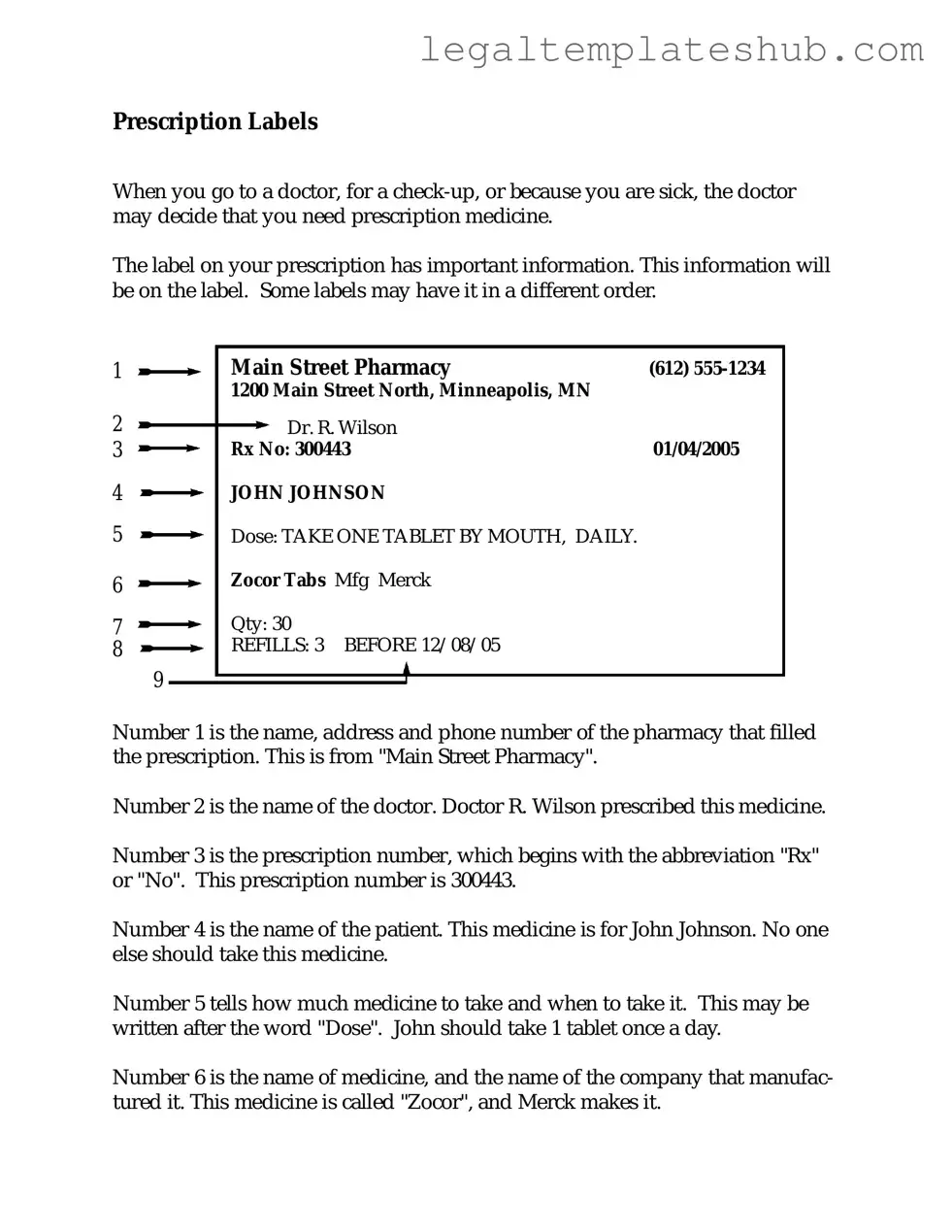Blank Prescription Label PDF Form
The Prescription Label form is a crucial document used to provide essential information about prescribed medications. It ensures that patients receive accurate instructions for their medication, including dosage and administration details. Understanding how to fill out this form correctly can enhance patient safety and medication adherence.
Ready to fill out the Prescription Label form? Click the button below to get started!
Access Editor
